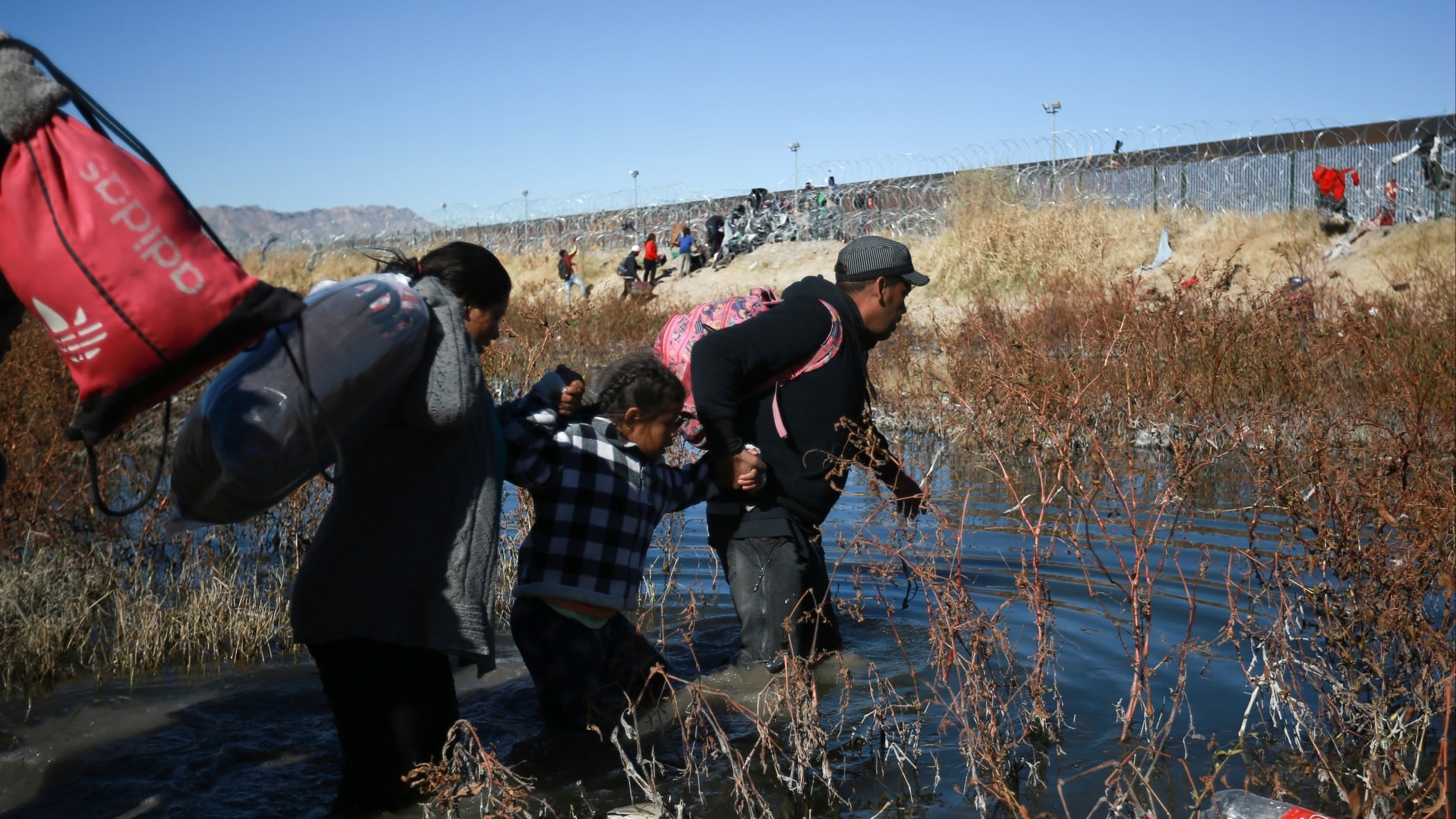By Maria Verza and Edgar H. Clemente
Mexican officials moved to clear a migrant encampment on the banks of the Rio Grande river Wednesday as U.S. officials met with Mexico's president to press for measures to limit a surge of migrants reaching the U.S. southwestern border.
Mexico began clearing tents, both occupied and unoccupied, from the encampment in the border city of Matamoros, across from Brownsville, Texas, starting Tuesday. The effort, backed by bulldozers and workers with machetes, continued Wednesday as U.S. Secretary of State Antony Blinken talked with President Andrés Manuel López Obrador in Mexico City.
López Obrador has said he is willing to help, but he wants to see progress in U.S. relations with Cuba and Venezuela, two of the top sources of migrants, along with more development aid for the region.
But Mexico's top priority appeared to be getting the United States to reopen border crossings that were closed because of the migrant surge.
“We spoke about the importance of the border, and about the economic relationship ... the importance of reopening the border crossings, that is a priority for us,” Foreign Relations Secretary Alicia Bárcena said following the meeting in Mexico City, which was also attended by U.S. Homeland Security Secretary Alejandro Mayorkas and homeland security adviser Liz Sherwood-Randall.
This month, as many as 10,000 migrants were arrested daily on the southwest U.S. border. The U.S. has struggled to process thousands of migrants at the border, and house them once they reach northern cities.
Mexican industries were stung last week when the U.S. briefly closed two vital Texas railway crossings, arguing that border patrol agents had to be reassigned to deal with the surge. Another non-rail border crossing remained closed in Lukeville, Arizona, and operations were partially suspended in San Diego and Nogales, Arizona.
The dismantling of the migrant encampment in Matamoros appeared to be a good-will gesture toward the United States. Migrants set up the encampment in late 2022. It once held as many as 1,500 migrants, but many tents were vacated in recent months as migrants waded across the river to reach the United States.
Segismundo Doguín, the head of the local office of Mexico's immigration agency, said, “What we are doing is removing any tents that we see are empty.”
But one Honduran migrant who would give only his first name, José, claimed some of the 200 remaining migrants had been practically forced to leave the camp late Tuesday.
“They ran us out,” he said, saying migrants were given short notice to move their tents and belongings out of the way and felt intimidated by the bulldozer moving through the tents. “You had to run for your life to avoid an accident.”
Mexico has assigned over 32,000 soldiers and National Guard troopers — about 11% of its total forces — to enforce immigration laws, and the National Guard now detains far more migrants than criminals.
But the shortcomings of Mexico's effort were on display Tuesday, when National Guard members made no attempt to stop a caravan of about 6,000 migrants, many from Central America and Venezuela, from walking through Mexico’s main inland immigration inspection point in southern Chiapas state near the Guatemala border.
In the past, Mexico has let such caravans go through, trusting that they would tire themselves out walking along the highway.
By Wednesday, Lazara Padrón Molina, 46, from Cuba was sick and exhausted. The caravan set out Dec. 24 from the city of Tapachula and had walked about 45 miles (75 kilometers) through the heat to Escuintla in southern Chiapas state.
“The route is too long to continue walking. Why don't they just give us documents so that we could get a bus or a taxi?” Padrón Molina said. “Look at my feet,” she said, showing blisters. “I can't go on anymore.”
But wearing the migrants out — by obliging Venezuelans and others to hike through the jungle-clad Darien Gap between Colombia and Panama or corralling migrants off passenger buses in Mexico — no longer appears to work.
So many migrants have been hopping freight trains through Mexico that one of the country's two major railroad companies suspended trains in September because of safety concerns. Police raids to pull migrants off railway cars — the kind of action Mexico took a decade ago — might be one thing the American delegation would like to see.
A few blocks from Mexico City's main plaza, where Blinken met with López Obrador at the National Palace, migrants stayed at an improvised shelter at a church, gathering strength before continuing north.
David Peña, his two daughters and his pregnant wife, Maryeris Zerpa, hoped to reach the United States before the child is born in about a month.
“The goal is to cross over so the baby will be born there,” Peña said. But with no asylum appointment, he had no idea how the family will enter.
The U.S. has shown that one country's problems on the border quickly become both countries' problems. The Texas railway closures put a chokehold on freight moving from Mexico to the U.S. as well as grain needed to feed Mexican livestock moving south.
López Obrador confirmed last week that U.S. officials want Mexico to do more to block migrants at its southern border with Guatemala, or make it more difficult to move across Mexico by train or in trucks or buses.
But the president said that in exchange he wanted the United States to send more development aid to migrants’ home countries and to reduce or eliminate sanctions on Cuba and Venezuela.
“We are going to help, as we always do,” López Obrador said. “Mexico is helping reach agreements with other countries, in this case Venezuela.” He said Mexico has proposed to President Joe Biden that a U.S.-Cuba bilateral dialogue be opened.
In May, Mexico agreed to take in migrants from countries such as Venezuela, Nicaragua and Cuba who are turned away by the U.S. for not following rules that provided new legal pathways to asylum and other forms of migration.
Associated Press writer Valerie Gonzalez contributed to this report













